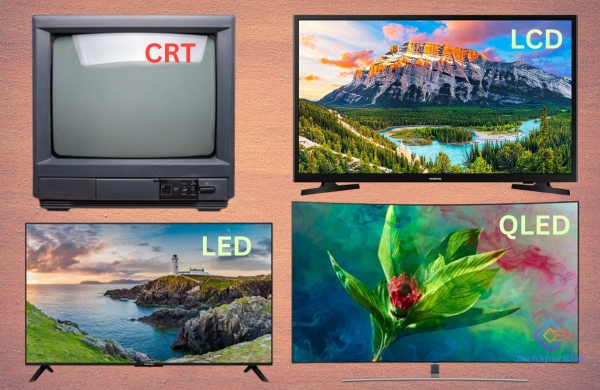
Television technology has made remarkable strides over the years, transforming from bulky cathode ray tube (CRT) screens to sleek, high-definition displays. The evolution of TV screens has been primarily driven by the development of different display types, each boasting unique features and capabilities.
These displays, characterized by variations in resolution, brightness, contrast, viewing angles, power efficiency, and more, cater to the diverse needs of consumers. To comprehend the distinctions among these display types, it’s crucial to grasp the fundamental building blocks of a TV screen: pixels.
Decoding Pixels and Screen Resolution
At the heart of every TV screen lies a multitude of pixels, the tiny particles responsible for creating images. These pixels combine the primary colors to generate a wide spectrum of hues, including black and white.
The number of pixels on a screen determines its resolution, with higher pixel counts leading to sharper, clearer images. The industry jargon, such as 1080p, 4K, and 8K, denotes different levels of resolution, influencing the overall visual experience.
Also Read: Comparing CU7700 and CU8000: What’s the Difference Between These Samsung TVs?
Early Television Display Technologies
The earlier TV models, such as the cathode ray tube (CRT) and projection TVs, utilized cathode rays and fluorescent lighting, leading to issues concerning size, heat, and power consumption.
The advent of liquid crystal display (LCD) technology brought significant advancements, paving the way for a more diverse range of display options. LCD screens utilized liquid crystals to blend colors and achieve screen illumination, which set the stage for a significant shift in the television industry.
The Emergence of LED and OLED
The introduction of LEDs (light-emitting diodes) marked a milestone in TV technology, offering improved power efficiency and enhanced visual quality. It’s important to note that LED TVs are essentially LCD TVs with LEDs serving as the light source for the display.
The strategic arrangement of LED light bulbs around or behind the LCD screen gave rise to various TV models, including ULED, QLED, and Nano Cell.
Organic light-emitting diode (OLED) technology, on the other hand, revolutionized the display market with its ability to control individual pixels, leading to true black display and superior energy efficiency.
OLED’s unique capability to switch off pixels individually results in a more realistic image quality, wider viewing angles, and reduced eye fatigue, setting it apart from traditional LCD-based screens.
Also Read: Top Five Smart TVs in 2023
Comparing Display Types: A Comprehensive Analysis
To assess the various display types objectively, it is imperative to consider critical factors such as cost, contrast, brightness, viewing angles, eye fatigue, power consumption, sleekness, and potential defects. Each display type offers distinct advantages and caters to different user preferences.
Costs: While OLEDs offer exceptional quality, QLED and ULED screens are relatively more affordable, making them popular choices for budget-conscious consumers looking for enhanced visual experiences without breaking the bank.
Contrast and Brightness: OLEDs excel in providing superior contrast, whereas QLED, ULED, and Nano Cell displays offer heightened brightness levels, making them ideal for bright environments. However, OLED’s energy-saving properties provide a unique advantage in the long run.
Viewing Angles: OLEDs, with their wider viewing angles, are optimal for large living spaces with multiple viewers, providing consistent picture quality regardless of the viewing position. QLED, ULED, and Nano Cell screens also offer commendable viewing angles, ensuring a satisfying visual experience for a diverse audience.
Eye Fatigue and Power Consumption: OLEDs lead the pack in reducing eye fatigue and power consumption, making them a prudent choice for prolonged viewing sessions and energy-conscious users. QLED, ULED, and Nano Cell displays follow closely, implementing local dimming features to strike a balance between visual comfort and power efficiency.
Sleekness and Defects: OLEDs boast a sleek design owing to their streamlined construction, while LCD-based screens, including ULED and Nano Cell, exhibit slightly thicker builds due to the layered backlight panels. LCD displays, however, have an advantage in terms of potential screen defects, as issues like burn-ins are relatively less common compared to OLEDs.
Making an Informed Choice
The choice of a television display ultimately hinges on individual preferences, viewing habits, and budget constraints. While OLEDs stand out as the pinnacle of display technology, offering unparalleled image quality and energy efficiency, QLED, ULED, and Nano Cell screens present cost-effective alternatives with commendable visual performance. Basic LED TVs remain a viable option for those seeking budget-friendly solutions without compromising on quality.
Also Read: Screen Mirroring: The Future of Home Entertainment
Conclusion
The evolution of TV display types has transformed the viewing experience, providing consumers with a diverse array of options tailored to their specific needs. As technology continues to advance, the boundaries of visual quality and user experience will continue to be pushed, ensuring that the world of television displays remains dynamic and ever-evolving.

Leave a Reply